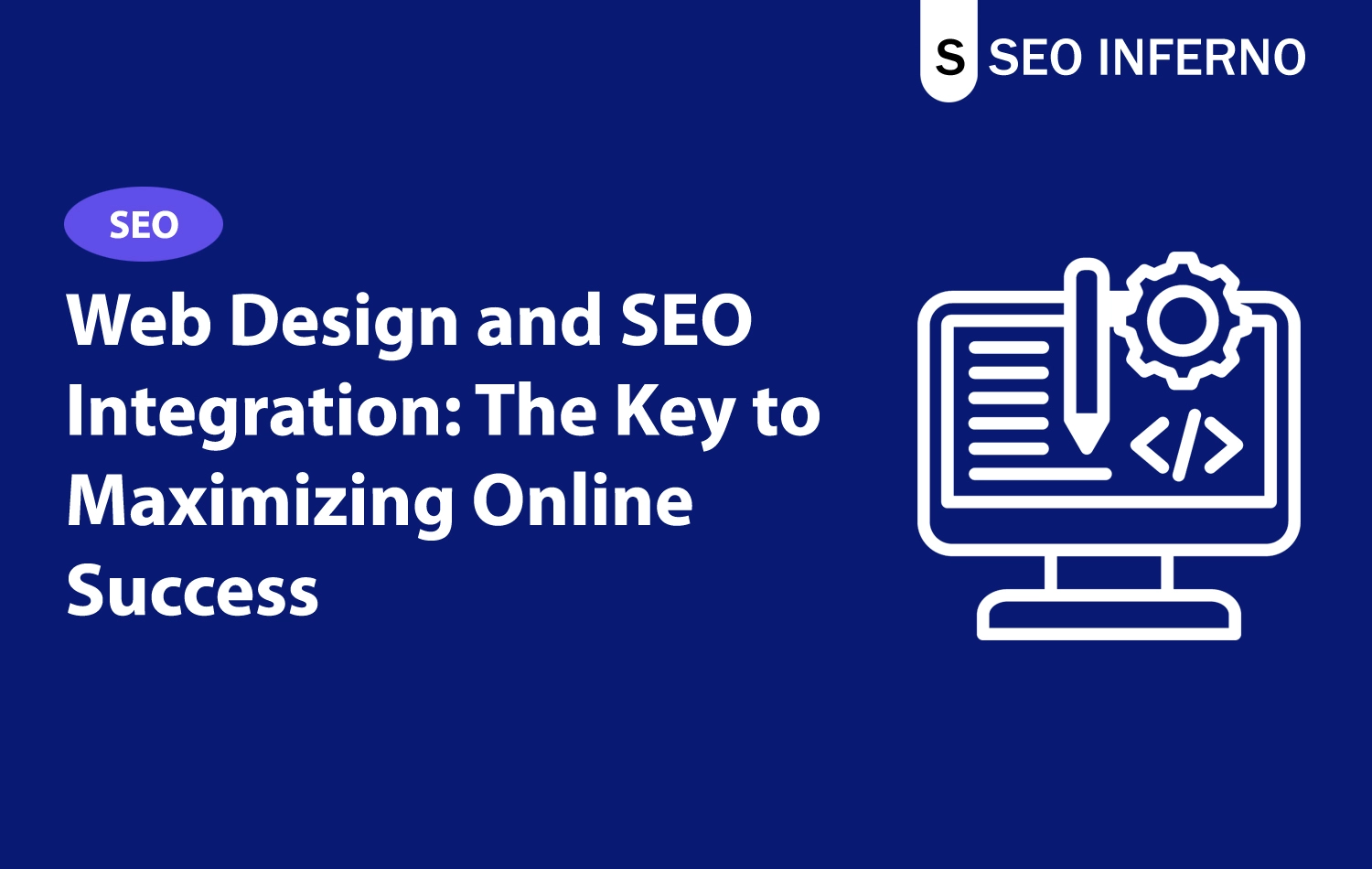In the digital age, a well-designed website serves as the heart of any business, acting as the primary touchpoint for potential customers. However, a beautiful website alone is not enough to ensure success in the highly competitive online landscape. The integration of web design and SEO (Search Engine Optimization) has emerged as a crucial strategy for small business owners and digital marketers aiming to boost their online visibility and achieve top rankings on search engine results pages (SERPs). This comprehensive guide delves into the synergy between web design & SEO, offering insights and actionable strategies to optimize your website design for search engines. By understanding and implementing these principles, you can enhance user experience, improve search rankings, and drive more organic traffic to your site, ultimately contributing to your business’s growth and success.
The Intersection of Web Design and SEO
Understanding the Impact of SEO on Web Design
1. Site Structure and Navigation
2. Mobile Responsiveness
3. Loading Speed
4. Content Visibility
While engaging visuals and dynamic elements can make a website stand out, they should not hinder the visibility of essential content. SEO and web design converge on the principle that content must be easily accessible and readable by both users and search engines. This includes using proper headings, structured data, and ensuring that text is not embedded within images or animations, which can prevent search engines from indexing your site content.
5. User Experience (UX)
SEO today is as much about content quality and relevance as it is about user experience. Google’s algorithm updates increasingly focus on user engagement metrics like dwell time and click-through rates. An SEO-optimized website design considers factors such as ease of use, site speed, and engaging content, all of which contribute to a positive user experience and, by extension, better search engine rankings.
Integrating SEO principles into web design from the outset is not merely a best practice; it’s a necessary approach for any business aiming to succeed online. By understanding the impact of SEO on web design, digital marketers and small business owners can create websites that not only captivate their audience but also satisfy the technical requirements of search engines.
Key Strategies for SEO-Optimized Web Design
1. Prioritize Mobile-First Design
2. Optimize Site Speed
3. Utilize SEO-Friendly URLs
4. Implement Intuitive Navigation
5. Incorporate Heading Tags Properly
6. Focus on High-Quality, SEO-Friendly Content
7. Optimize Images
8. Leverage Social Sharing Buttons
9. Use Internal Linking Wisely
10. Ensure Accessibility
An accessible website not only reaches a wider audience but is also favored by search engines. Ensure your website design adheres to web accessibility standards, including proper use of contrast, alt text for images, and accessible navigation.
By integrating these strategies, you can create a website that not only looks great but also performs well in search engine rankings. Remember, SEO and web design are ongoing processes. Regularly review your site’s performance and make adjustments as needed to stay ahead of the competition.
Common Web Design Mistakes that Hurt SEO
1. Neglecting Mobile Optimization
2. Overlooking Page Speed
3. Poor URL Structure
4. Inadequate Navigation
5. Using Excessive Flash Content
6. Failing to Use Heading Tags Correctly
7. Ignoring Image Optimization
8. Overlooking the Importance of Content
9. Missing Out on Social Sharing Opportunities
10. Lack of Accessibility
A non-accessible website can exclude a significant portion of your audience and impact your site’s SEO. Ensure your website design complies with accessibility standards to reach a wider audience and improve user experience.
Avoiding these common mistakes requires a balanced approach to web design and SEO, ensuring that both elements work harmoniously to achieve the best possible rankings and user experience.
Evaluating the Role of Content in SEO Web Design
Importance of Quality Content
- Boosts SEO Rankings: High-quality, relevant content is favored by search engines and can significantly boost your site's rankings. By incorporating targeted keywords naturally and offering value to readers, you can improve your site's visibility.
- Engages Users: Content that addresses the needs and interests of your audience will engage and retain visitors, reducing bounce rates and increasing the likelihood of conversions.
- Enhances User Experience: Well-structured, accessible content contributes to a positive user experience, encouraging visitors to explore your site further and engage with your brand.
Integrating Content with Web Design
- Content-First Design: Start your web design process with content strategy in mind. This ensures that your site structure, navigation, and visuals complement and enhance your content, rather than overshadow it.
- Readability and Accessibility: Design your website to make content easily readable and accessible. Use clear fonts, adequate spacing, and contrast to ensure text is easy on the eyes. Implementing accessibility features like alt text for images and proper heading structures also improves SEO.
- Visual Content: Incorporate relevant images, videos, and infographics to complement your textual content. Visuals can break up text, making it more digestible, and can also significantly boost engagement and retention. Ensure all visual content is optimized for SEO with descriptive file names and alt attributes.
- Content Hierarchy: Use a clear hierarchy in your content, employing headings and subheadings to organize information. This not only aids readability but also helps search engines understand and rank your content more effectively.
- Regular Updates: Keep your content fresh and updated. Search engines favor websites with regularly updated content, as it indicates relevancy and authority. Plan a content calendar to add or refresh content on your site consistently. Keyword Integration: While keywords are crucial for SEO, they should be integrated naturally into your content. Keyword stuffing can harm readability and penalize your SEO efforts. Focus on creating content that naturally incorporates your targeted keywords.
- Content Promotion: Use your website design to promote important or new content. Featuring blog posts, articles, or videos on your homepage or using internal linking strategies can increase visibility and engagement.
Case Studies: Success Stories of Website Design and SEO Services
Exploring real-world examples provides valuable insights into the practical application and benefits of integrating web design with SEO strategies. Here are a few success stories of businesses that have mastered the art of SEO website design, leading to significant improvements in their online presence, user engagement, and conversion rates.
Case Study 1: Local Retailer Boosts Organic Traffic and Sales
- Challenge: A local retailer struggled with an outdated website that was not mobile-friendly and had poor visibility in search engine results, leading to declining in-store and online sales.
- Solution: The retailer collaborated with a web design and SEO agency that implemented a mobile-first design approach, optimized site speed, and restructured the site architecture for better navigation. They also revamped the content strategy to include SEO-optimized product descriptions, blog posts targeting relevant keywords, and local SEO elements.
- Result: Within six months, the retailer saw a 70% increase in organic traffic and a 40% increase in online sales. Their website started ranking on the first page for several key product-related keywords, significantly boosting in-store visits from local search results.
Case Study 2: B2B Service Provider Enhances Lead Generation
- Challenge: A B2B service provider's website suffered from low traffic and poor conversion rates, attributed to a lack of SEO optimization and a user-unfriendly design.
- Solution: The company invested in redesigning their website with a focus on SEO-friendly content, clear and compelling calls to action (CTAs), and an improved lead generation funnel. They also optimized their service pages with targeted keywords and created valuable resource content to attract and engage their target audience.
- Result: The redesign and SEO efforts led to a 120% increase in organic traffic and a 60% increase in leads generated through the website. The company also reported improved rankings for their targeted keywords, enhancing their online authority in their industry.
Case Study 3: E-commerce Platform Optimizes for International Markets
- Challenge: An e-commerce platform looking to expand its reach into international markets faced challenges with localizing content and optimizing for regional search engine variations.
- Solution: The platform adopted a multi-lingual and multi-regional SEO strategy, redesigning their website to accommodate language-specific content and navigation. They implemented hreflang tags for language and regional targeting and optimized their content for culturally relevant keywords.
- Result: The e-commerce platform experienced a 50% increase in international traffic and a 35% increase in sales from targeted regions. The SEO and design optimizations improved user experience for international visitors, leading to higher engagement and conversion rates.
Conclusion and Next Steps
The journey through the intricate relationship between web design and SEO underscores the pivotal role this integration plays in the digital success of any business. As we’ve explored, marrying the aesthetic appeal of web design with the technical precision of SEO not only enhances user experience but also propels websites to the top of search engine rankings. The case studies provided illuminate the tangible benefits of this synergy, showcasing improved traffic, engagement, and conversions.
Key Takeaways
- Integrated Approach: Web design and SEO should not operate in silos but as a unified strategy to optimize both user experience and search engine visibility.
- Mobile-First Design: Prioritizing mobile responsiveness is crucial in today’s mobile-dominated internet usage, affecting both user satisfaction and SEO rankings.
- Site Speed: Optimizing loading times is essential for keeping users engaged and reducing bounce rates, directly influencing SEO performance.
- Content Is King: High-quality, relevant content remains at the heart of SEO, necessitating a design that supports and enhances the visibility and accessibility of textual and visual content.
- User Experience (UX): A site designed with the user in mind, offering intuitive navigation and valuable content, is more likely to perform well in search rankings.
Steps for Website Owners
- Audit Your Website: Begin with a comprehensive audit of your current website to identify areas for improvement in both design and SEO. Tools like Google Analytics, PageSpeed Insights, and mobile-friendly tests can offer valuable insights.
- Develop a Strategy: Based on the audit, develop a strategy that addresses both web design and SEO. Consider the structure, content, and performance optimizations needed.
- Implement Changes Gradually: Start implementing changes gradually, focusing first on critical areas like mobile responsiveness and site speed. Monitor the impact of these changes on your SEO rankings and user engagement.
- Invest in Quality Content: Continuously produce and update your website with high-quality content that resonates with your audience and incorporates targeted keywords naturally.
- Stay Updated: SEO and web design are dynamic fields, with search engines regularly updating their algorithms. Stay informed about the latest trends and best practices to keep your website optimized.
The path to achieving top rankings in search engines through optimized web design is ongoing. It requires a commitment to excellence in both design and SEO, a willingness to adapt to changing trends, and a focus on delivering the best possible experience to users. By following the strategies and principles outlined in this guide, you can enhance your online presence, attract more traffic, and drive business success.
Remember, the journey doesn’t end with implementation. Continuously monitor your site’s performance, engage with your audience to understand their needs and preferences, and refine your approach as necessary. The digital landscape is ever-evolving, and staying ahead requires diligence, creativity, and a strategic mindset.
This comprehensive guide has provided an in-depth exploration of how to optimize your website design for top rankings through the integration of web design and SEO. By understanding the interplay between these two critical elements, small business owners and digital marketers are equipped to enhance their online visibility, engage their target audience more effectively, and achieve their digital marketing goals.





